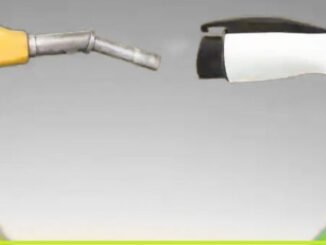
India’s electric two-wheeler (E2W) market is in the midst of a dramatic transformation. What began as a budget-driven movement—where affordability and fuel savings were the primary motivators—has rapidly evolved into a sophisticated market where performance, technology, and sustainability are just as important as price. This shift in mindset is not only changing what Indians ride but also how they perceive mobility itself.
The Early Days
- Focus on affordable, practical EVs
- Aimed at cost-conscious commuters
- Boosted by govt subsidies
- Petrol still dominant
- Premium options came later
2020–2023
Post-FAME II Transition
- Petrol dominance persists: Honda Activa (₹70,000–₹85,000) remains India’s top-selling two-wheeler.
- Early electric adoption: Hero Electric Photon (₹86,391 post-FAME II subsidy) and Optima DX (₹67,190–₹1.04 lakh) dominate budget E2W sales.
- State policies emerge: Maharashtra introduces a 10% subsidy on E2Ws and toll waivers on expressways (Mumbai-Pune, Atal Setu).
2023 Premium Segment Entry
- TVS X launches at ₹2.49 lakh (August 2023), India’s first premium E2W with a 140 km range and 105 km/h top speed.
- Market polarization begins: Budget (₹65,000–₹1 lakh) and premium (₹1.2 lakh+) segments coexist.
2024 FAME III (PM E-DRIVE) Launches
- Subsidy shift: Central per-vehicle subsidies reduced, but ₹4,000 crore allocated for rural charging infrastructure.
- Ultra-affordable models: Komaki XR1 debuts at ₹29,999 (February 2025), targeting tier-2/3 cities with a 70–80 km range.
2025 Market Diversification
- Budget expansion: Hero Electric Optima CX priced at ₹67,190–₹1.04 lakh.
- Premium push: Ultraviolette Tesseract (₹1.45 lakh) and TVS X (₹2.50 lakh) solidify the luxury segment.
- Price spectrum: ₹30,000 (Komaki XR1) to ₹2.50 lakh (TVS X), reflecting a stratified market.
Environmental Consciousness:
A New Driving Force
Another powerful factor shaping the E2W market is growing environmental awareness. Concerns about air pollution, climate change, and sustainability are influencing buyer behavior, especially among urban consumers. Many see electric two-wheelers not just as a personal convenience but as a contribution toward a cleaner, greener future. The fact that India is home to some of the world’s most polluted cities has only heightened this consciousness, making E2Ws an attractive option for those wanting to reduce their carbon footprint.
Changing Preferences:
A Willingness to Pay for More
As the Indian electric two-wheeler market matures, consumer preferences are clearly shifting beyond just affordability. Increasingly, buyers are willing to pay more for advanced features, better performance, and greater convenience, signaling a move toward premiumization. The following statistics highlight this changing mindset:
| Factor | 2015-2016 | 2024–2025 | Growth/Change | Impact on E2W Adoption |
| Per Capita Income | ₹86,879 (annual) | ₹2.12 lakh (annual) | 144% increase | Higher disposable income enables premium E2W purchase |
| Social Media Users | 134 million | 491 million | 266% rise | Increased awareness of EV benefits and tech features |
| E2W Sales | 20,000 units | 1.2 million units | 5,900% surge | Mainstream acceptance as affordability and charging access improve |
| Premium Model Adoption | 0% (budget-only segment) | 25% market share (₹1.2L+ models) | New segment creation | Consumers prioritize tech, range, and performance |
| EV Charging Stations | <500 public stations | 26,000+ public stations | 5,100% expansion | Reduced range anxiety; urban/rural accessibility |
These bikes, priced upwards of ₹2.99 lakh, are finding favor among urban youth and technology enthusiasts who value both style and substance. The popularity of such brands signals a growing segment of consumers who see E2Ws as aspirational products, not just utilitarian vehicles.
The Rise of Premium Players
The shift toward premiumization has opened the door for new entrants and startups focused on high-performance, tech-rich electric motorcycles. Companies like Ultraviolette Automotive are leading the charge, offering models such as the F77 Mach 2, which boasts a range of over 200 km, rapid charging, advanced safety features, and striking designs.
India’s electric two-wheeler market is no longer just about affordability. The evolving consumer mindset now values performance, convenience, smart features, and environmental responsibility alongside price. This shift is a positive sign for the future of clean mobility in India, promising a market that is not only larger but also more diverse and dynamic. As more Indians embrace premium electric two-wheelers, the country moves closer to a sustainable, technologically advanced, and economically vibrant mobility landscape.






